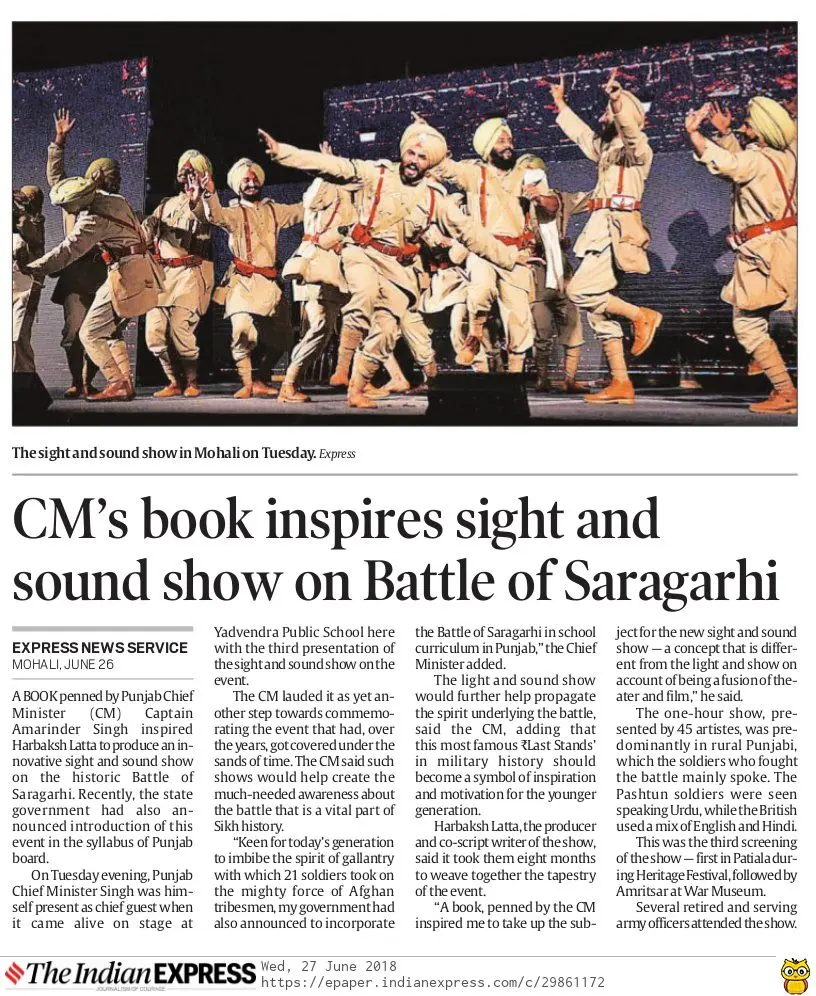› Such shows can help create the muchneeded awareness about the battle as it is a vital part of Sikh history.
CAPTAIN AMARINDER SINGH, chief minister of Punjab
MOHALI: The sight and sound show on the ‘Battle of Saragarhi’ came alive at Yadavindra Public School, Mohali, on Tuesday evening.

Set against the backdrop of a digital set, showcased on a LED screen, the show brought history to life.
The Battle of Saragarhi was fought before the Tirah Campaign on 12 September 1897 between Sikh soldiers of the British Indian Army and Pashtun Orakzai tribesmen. It took place in the North-West Frontier Province.
The show commenced with the motivational words of Havaldar Ishar Singh, underlining the call of duty that had led the 21 Sikh soldiers of the British Indian Army to their deaths while fighting the Pashtun Orakzai tribesmen.
The audience said that it appeared as though the battle of September 12, 1897, was being replayed in front of their eyes, more than a century after it was valiantly fought by the men belonging to 36th Sikhs.
Punjab chief minister Captain Amarinder Singh, who was present on the occasion, said, “It is yet another step towards commemorating the event that had, over the years, got covered under the sands of time.”
The CM, who has been instrumental in bringing the event back into the limelight with his book, said, “Such shows can help create the much-needed awareness about the battle as it is a vital part of Sikh history.”
According to Harbaksh Latta, the producer and co-script writer of the show, it took the team eight months to weave together the tapestry of the events of the momentous day.
He said the book penned down by Captain Amarinder Singh inspired him to take up the subject for his new sight and sound show – a concept that he believes is different from the light and show on account of being a fusion of theatre and film.
“The book, titled Saragarhi and the Defence of the Samana Forts: The 36th Sikhs in the Tirah Campaign 1897-98, became my chief source of research for the realisation of the concept, said Latta, who co-scripted the show with Keshav Bhrata.
The one-hour show, choreographed by 45 artistes/actors, was predominantly in rural Punjabi language.
The Pashtun soldiers were seen speaking rustic Urdu while the British used a mix of English and Hindi in the show, said one of the artistes.
This was the third screening of the show – the first show was showcased in Patiala, followed by Amritsar.

